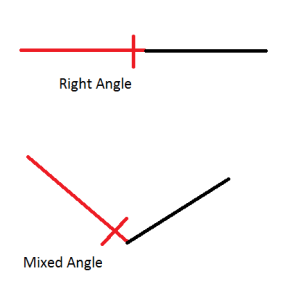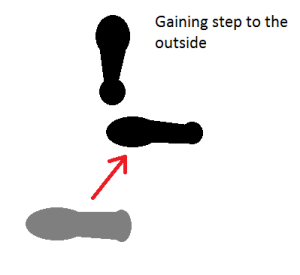Atajo for the Short Fencer
The first principle of LVD is to defend yourself and attack while defended. In any defense of steel you require a crossing of the weapons to deviate or subject a threat. By inspection we find that defensive crossing can’t happen with two blades that are perfectly parallel (or the defensive action is difficult and less useful if perfectly aligned).
Knowing that the defender must move from right angle into a mixed angle. In Atajo Pacheco tells us the movements are violent (to lift into the superior plane), offline (to cover the opposing weapon), and natural (to subject downward).
Likewise Atajo requires:
1. Equal or greater degrees of strength in the engagement
2. Subjection from above
3. The line of attack is closed such that you cannot be struck in a single movement
4. Not participating in any extremes
We also know the hand is fingernails inside (as if you had naturally extended it to shake hands) or Italian 3rd.
In my personal experience the atajo will start in something near right angle at MdP but will use different degrees of mixed angle as the distance closes to increase the defensive potential.
If that is the case, it provides us with guidance for the short fencer who needs to place an atajo over the blade of a taller fencer. In a contest between unequal reach, a shorter fencer can maintain right angle and then step curved to either the inside or the outside dropping into mixed angle to subject with atajo which may be engagement or without it in a similar manner to finding the sword in the Italian school. The goal is to close the line and dominate the high line to reduce the opportunities of the adversary into predictable lines of attack which can be quickly defeated because the path of attack is known.
Stepping Inside (towards your front)
From MdP to step to the fencer’s inside (curved right for a right-hander) drop the hilt while lifting the point directing into the opposing steel. Make a curved step with the rear foot to find an atajo just as Capoferro describes in his book. Once you have the opposing weapon, step into MPal to seek MPado.
Stepping Outside (towards your back)
From MdP to step to the fencer’s outside drop the hilt while lifting the point directing into the opposing steel. Bring the rear big toe near the front heel to gather the feet together. Once you have the opposing steel, step into MPal to seek MPado.
In both cases your mixed angle should be deep enough to force a larger disengagement. If the adversary disengages, carry the blade directly across your body leading with the point into the opposing steel and take atajo on the new line.
Once the shorter fencer dominates the line at what we call in our school the “dangerous middle place” or MPal, they have an advantage over their longer-limbed adversary. There are other techniques that work well for shorter fencers but that’s another conversation.
There is also a tendency to race to the high line without regard for protecting yourself. If your taller adversary lifts the point such that the blade is in obtuse angle strike him. If you cannot reach the body in the time available, strike the bottom of the arm.
Key Points
1. The right angle will beat the obtuse (or acute angle).
2. The atajo will beat the right angle.
3. If you can’t easily cover the adversary’s weapon with yours, point over and into it and move off the line to find your atajo.
~P.



